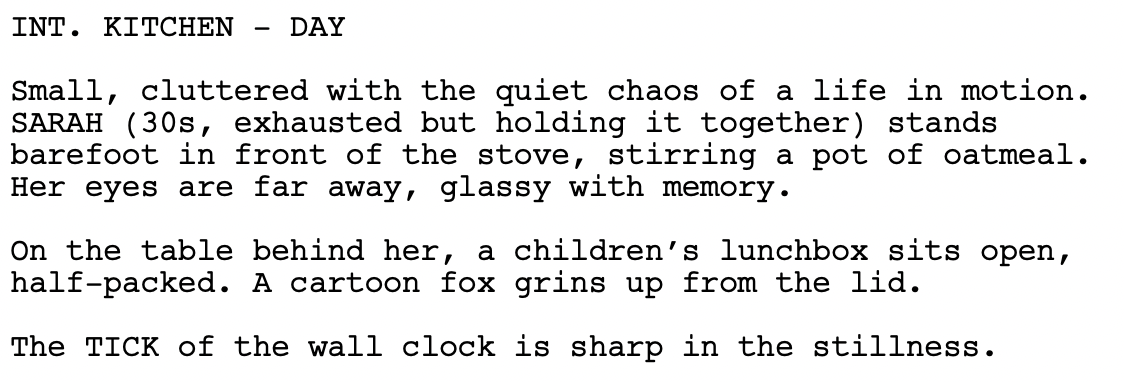Fix This - 7.6.25
When writing a screenplay, your goal is to help the reader clearly visualize the story. That means providing just enough detail to convey the action and emotion.
New screenwriters often go overboard, trying to capture every detail exactly as they imagine it. The result? Overwritten scenes.
Take a look at the excerpt—how much can you trim?
We can see the appeal of all this scene description. This is exactly how the writer envisions the scene, and they have included all the details in their script.
But, do they really need it? They do not.
There are many tighter ways to describe the same thing. Here’s one of them…
In this version, you’ve cut the description in half AND you’ve managed to get rid of the long paragraphs. (Remember, it’s a good idea to try to keep your action description to four lines per paragraph or less.) Win-win.
Is there a way to make it tighter? Definitely! Here’s one of them…
Notice that you’re still giving enough detail for the reader to adequately imagine the scene and understand the emotion you’re trying to convey, but you’re taking up a lot less space in your script. That’s a good thing.
Of course, we know some of you will pushback on these rewrites because the abundance of detail is more vivid. We get it. We totally admit that it feels really good to get everything that’s in your head onto the page. The trouble is that screenplays have a page limit. When you go into unnecessary detail—no matter how evocative—you’re eating up space that could be used to move your story forward. By cutting all those lines, you free up room in your script you can use for something that matters more than the size of Sarah’s sweatshirt and the state of her hair. Sometimes you have to lose the small details to serve your overall narrative.
Want in-depth, highly personalized guidance on your writing projects? Send us your feature screenplay or short film script for professional feedback.



